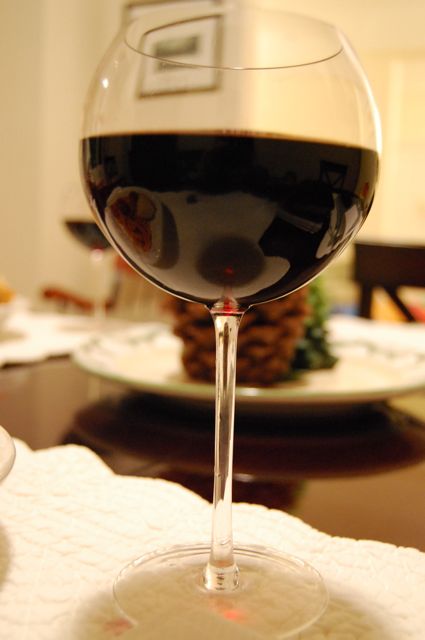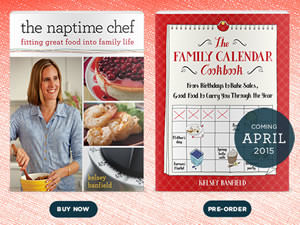Navigating Valentine Wine with Sasha! {Naptime Simple Tips}
It doesn’t have to be a minefield. I always check out a restaurant’s wine list online before I visit. Pick out a few wines in your price range and spend a few minutes researching them. It’s a worthwhile investment of your time. Better to spend the evening gazing into the eyes of your loved one that staring at a wine list, no?
Tell the sommelier what you’re looking for, and don’t shy away from establishing a price range. Tell her you want something under $40 — or if you feel awkward saying a dollar amount out loud, point to a wine in your price range on the list and tell her you want something for around that price. Mention some wines you know you like (or ones you don’t) to give her a sense of your taste.
Word to the wise: asking for a “dry” wine is virtually meaningless. Almost every wine on the list will be made in a “dry” style. If by “dry” you mean mouth-drying and a little bitter, like oversteeped tea, then you really mean “tannic.” (Wines made from Cabernet Sauvignon, for example, can be quite tannic.) And if you mean zesty and mouth-puckering, like a glass of tart lemonade, then you mean “acidic.” (Sauvignon Blanc is the quintessential example here.) Being precise with these terms will help you get what you want.
Finally, look beyond the tried-and-true (Bordeaux, Burgundy, Champagne, Napa) for the best values. Southern France and Spain are two regions I always look to, as well as off-the-beaten track regions in California. And this is just me, but I rarely order Pinot Noir-based wines when I’m out at a restaurant. It’s very tough to get this grape right. Inexpensive Pinots aren’t much to write home about–and good Pinots at a restaurant mark-up can be seriously pricey.
The most important thing is to develop a great relationship with the staff at your local wine store. Be a repeat customer — and give them plenty of feedback on the wines you do and don’t like (and why).
Also, choose your price range and stick to it. Don’t be intimidated into spending more; these days there are delicious wines at every price.
I wouldn’t stress too much about finding the “perfect” wine for what you’re serving, but if you do want some matching guidance from the wine store staff, be specific. How you’re preparing something (grilled vs. fried, for example) and what you’re pairing with (sauces, side dishes) can have a big impact on what to pair it with.
Some wine labels are incredibly detailed — others much less so. It might depend on the type of wine, where it’s from…and the predilections of the winery’s marketing department!
One wine label line item that’s mandatory: alcohol content. Most wines are in the 12-15% range. (Setting aside fortified wines such as port, sherry and the like.) This is one drinker’s opinion, but once you get north of 13.5-14%, you’re talking about wine that packs a serious kick! Everyone’s taste is different, but a lot of wine cognoscenti criticize these very alcoholic wines, as alcohol tends to blunt other flavors. If you’re talking about a romantic dinner for two where you anticipate splitting a bottle of wine, you would want to look for wines with more moderate alcohol levels.
And please, have no shame about choosing a wine for its label! One wine region that gets a lot of love (no pun intended) for its labels around Valentine’s Day is Saint-Amour. These are medium-bodied wines from the Saint-Amour region in Beaujolais. They’re really food-friendly, delicious, and versatile wines — often with amorous themes on their labels!
Usually we opt for meals that have a special meaning. A few years ago, my husband and I made b’stilla because we had eaten in during our vacation in Bandol, in southern France. We served it with a wine from the region. It wasn’t a “perfect” match — but it made sense to us and reminded us of our amazing trip.
As much as possible! Sparkling wine is great with any number of foods. You can start off with a lighter style, like a Blanc de Blanc champagne, that marries particularly well with salty or fried food. (It’s also great with sushi.) Try a fuller sparkling wine for your main course — think pink with Roederer Estate Brut Rosé from California or Avinyo Rosado Cava from Spain. There are even sparkling reds — Australia makes sparkling Shiraz, and there are some terrific Italian Lambruscos these days. Again, I don’t love sparkling and chocolate together, but if you have a fruit dessert planned, Moscato d’Asti can be a delicious accompaniment.
Valentine’s Day is a great opportunity to drink a wine with some age on it. What better way to toast your enduring love? (Awww…) Try something you have stashed away that you’ve been meaning to open, or else a bottle from your local wine shop. (You’ll want to hit a store that specializes in wine, not just your local liquor store, to make sure they have a good selection and good storage for older bottles.)
As for me, I have a 1998 Hermitage (a Syrah-based wine from France’s Northern Rhône region) that’s begging to be opened.


I love Port and chocolate and agree it’s much better than wine and chocolate. Have you tried Desiree Chocolate Port? It’s perfect on its own or paired.
[…] Source: https://thenaptimechef.com/2012/02/navigating-valentine-wine-with-sasha-naptime-simple-tips/ […]
[…] Navigating Valentine Wine with Sasha! | The Naptime ChefFeb 13, 2012 … Sasha of Spin the Bottle NY shows us how to navigate the Valentine’s Day wine list. […]